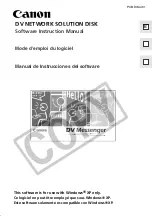
•
JUMBO FRAME or IPv6 mode is not supported.
•
SYN Proxy or First UDP packet with fragment is not supported.
•
Vsys is not supported.
Configuring Services for IDP Rules
Services are application layer protocols that define how data is structured as it travels
across the network. Because the services you support on your network are the same
services that attackers must use to attack your network, you can specify which services
are supported by the destination IP to make your rule more efficient.
NOTE:
All services rely on a transport layer protocol to transmit data. IDP includes
services that use TCP, UDP, RPC, and ICMP transport layer protocols.
Service objects represent the services running on your network. NSM includes predefined
service objects that are based on industry-standard services. You use these service
objects in rules to specify the service an attack uses to access your network. You can
also create custom service objects to represent protocols that are not included in the
predefined services.
In the Service column you select the service of the traffic you want IDP to match:
•
Select
Default
to accept the service specified by the attack object you select in the
Attacks column. When you select an attack object in the Attack column, the service
associated with that attack object becomes the default service for the rule. To see the
exact service, view the attack object details.
•
Select
Any
to set any service.
•
Select
Service
to choose specific services from the list of defined service objects.
You want to protect your FTP server from FTP attacks. Set the service to Default, and
add an attack object that detects FTP buffer overflow attempts. The Service column in
the rule still displays “ Default” , but the rule actually uses the default service of TCP-FTP,
which is specified in the attack object.
Your mail server supports POP3 and SMTP connections but not IMAP. Set POP3 and
SMTP service objects as services that can be used to attack that server. Because IMAP
is not supported, you do not need to add the IMAP service object.
If you are supporting services on nonstandard ports, you should choose a service other
than default.
You use a nonstandard port (8080) for your HTTP services. Use the Object Manager to
create a custom service object on port 8080.
Add this service object to your rule, then add several HTTP attack objects, which have a
default service of TCP/80. IDP uses the specified service, HTTP-8080, instead of the
default, and looks for matches to the HTTP attacks in TCP traffic on port 8080.
465
Copyright © 2010, Juniper Networks, Inc.
Chapter 9: Configuring Security Policies
Summary of Contents for NETWORK AND SECURITY MANAGER 2010.3
Page 6: ...Copyright 2010 Juniper Networks Inc vi...
Page 36: ...Copyright 2010 Juniper Networks Inc xxxvi Network and Security Manager Administration Guide...
Page 52: ...Copyright 2010 Juniper Networks Inc 2 Network and Security Manager Administration Guide...
Page 90: ...Copyright 2010 Juniper Networks Inc 40 Network and Security Manager Administration Guide...
Page 144: ...Copyright 2010 Juniper Networks Inc 94 Network and Security Manager Administration Guide...
Page 146: ...Copyright 2010 Juniper Networks Inc 96 Network and Security Manager Administration Guide...
Page 234: ...Copyright 2010 Juniper Networks Inc 184 Network and Security Manager Administration Guide...
Page 310: ...Copyright 2010 Juniper Networks Inc 260 Network and Security Manager Administration Guide...
Page 364: ...Copyright 2010 Juniper Networks Inc 314 Network and Security Manager Administration Guide...
Page 366: ...Copyright 2010 Juniper Networks Inc 316 Network and Security Manager Administration Guide...
Page 478: ...Copyright 2010 Juniper Networks Inc 428 Network and Security Manager Administration Guide...
Page 576: ...Copyright 2010 Juniper Networks Inc 526 Network and Security Manager Administration Guide...
Page 580: ...Copyright 2010 Juniper Networks Inc 530 Network and Security Manager Administration Guide...
Page 592: ...Copyright 2010 Juniper Networks Inc 542 Network and Security Manager Administration Guide...
Page 684: ...Copyright 2010 Juniper Networks Inc 634 Network and Security Manager Administration Guide...
Page 690: ...Copyright 2010 Juniper Networks Inc 640 Network and Security Manager Administration Guide...
Page 696: ...Copyright 2010 Juniper Networks Inc 646 Network and Security Manager Administration Guide...
Page 698: ...Copyright 2010 Juniper Networks Inc 648 Network and Security Manager Administration Guide...
Page 748: ...Copyright 2010 Juniper Networks Inc 698 Network and Security Manager Administration Guide...
Page 778: ...Copyright 2010 Juniper Networks Inc 728 Network and Security Manager Administration Guide...
Page 870: ...Copyright 2010 Juniper Networks Inc 820 Network and Security Manager Administration Guide...
Page 872: ...Copyright 2010 Juniper Networks Inc 822 Network and Security Manager Administration Guide...
Page 898: ...Copyright 2010 Juniper Networks Inc 848 Network and Security Manager Administration Guide...
Page 908: ...Copyright 2010 Juniper Networks Inc 858 Network and Security Manager Administration Guide...
Page 910: ...Copyright 2010 Juniper Networks Inc 860 Network and Security Manager Administration Guide...
Page 995: ...PART 6 Index Index on page 947 945 Copyright 2010 Juniper Networks Inc...
Page 996: ...Copyright 2010 Juniper Networks Inc 946 Network and Security Manager Administration Guide...
















































